
Anne Brontë was an English novelist and poet, the youngest member of the Brontë literary family.
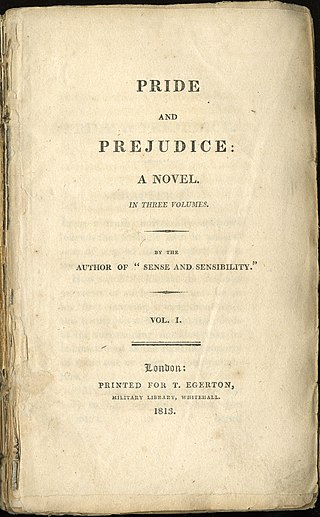
Pride and Prejudice is the second novel by English author Jane Austen, published in 1813. A novel of manners, it follows the character development of Elizabeth Bennet, the protagonist of the book, who learns about the repercussions of hasty judgments and comes to appreciate the difference between superficial goodness and actual goodness.

Sense and Sensibility is the first novel by the English author Jane Austen, published in 1811. It was published anonymously; By A Lady appears on the title page where the author's name might have been. It tells the story of the Dashwood sisters, Elinor and Marianne as they come of age. They have an older half-brother, John, and a younger sister, Margaret.

Jane Eyre is a novel by the English writer Charlotte Brontë. It was published under her pen name "Currer Bell" on 19 October 1847 by Smith, Elder & Co. of London. The first American edition was published the following year by Harper & Brothers of New York. Jane Eyre is a bildungsroman that follows the experiences of its eponymous heroine, including her growth to adulthood and her love for Mr Rochester, the brooding master of Thornfield Hall.

Emma is a novel written by English author Jane Austen. It is set in the fictional country village of Highbury and the surrounding estates of Hartfield, Randalls and Donwell Abbey, and involves the relationships among people from a small number of families. The novel was first published in December 1815, although the title page is dated 1816. As in her other novels, Austen explores the concerns and difficulties of genteel women living in Georgian–Regency England. Emma is a comedy of manners.
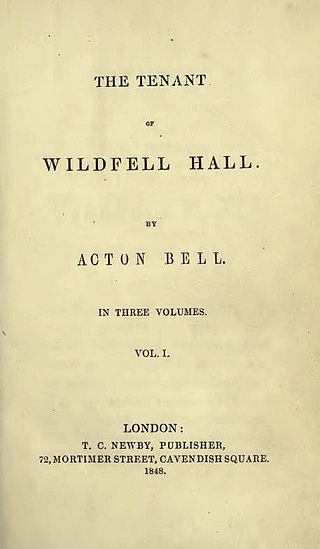
The Tenant of Wildfell Hall is the second and final novel written by English author Anne Brontë. It was first published in 1848 under the pseudonym Acton Bell. Probably the most shocking of the Brontës' novels, it had an instant and phenomenal success, but after Anne's death her sister Charlotte prevented its re-publication in England until 1854.

Persuasion is the last novel completed by the English author Jane Austen. It was published on 20 December 1817, along with Northanger Abbey, six months after her death, although the title page is dated 1818.

Agnes Grey, A Novel is the first novel by English author Anne Brontë, first published in December 1847, and republished in a second edition in 1850. The novel follows Agnes Grey, a governess, as she works within families of the English gentry. Scholarship and comments by Anne's sister Charlotte Brontë suggest the novel is largely based on Anne Brontë's own experiences as a governess for five years. Like her sister Charlotte's 1847 novel Jane Eyre, it addresses what the precarious position of governess entailed and how it affected a young woman.
Sanditon (1817) is an unfinished novel by the English writer Jane Austen. In January 1817, Austen began work on a new novel she called The Brothers, later titled Sanditon, and completed eleven chapters before stopping work in mid-March 1817, probably because of illness. R.W. Chapman first published a full transcription of the novel in 1925 under the name Fragment of a Novel.

Hester ChaponenéeMulso, was an English writer of conduct books for women. She became associated with the London Bluestockings.
Jane West, was an English novelist who published as Prudentia Homespun and Mrs. West. She also wrote conduct literature, poetry and educational tracts.
Margaret Bryan, Baroness Bryan was lady governess to the children of King Henry VIII of England, the future monarchs Mary I, Elizabeth I, and Edward VI, as well as the illegitimate Henry FitzRoy. The position of lady governess in her day resembled less that of the popular modern idea of a governess, more that of a nanny.
A lady's companion was a woman of genteel birth who lived with a woman of rank or wealth as retainer. The term was in use in the United Kingdom from at least the 18th century to the mid-20th century but it is now archaic. The profession is known in most of the Western world. The role was related to the position of lady-in-waiting, which by the 19th century was applied only to the female retainers of female members of the royal family. Ladies-in-waiting were usually women from the most privileged backgrounds who took the position for the prestige of associating with royalty, or for the enhanced marriage prospects available to those who spent time at court, but lady's companions usually took up their occupation because they needed to earn a living and have somewhere to live. A companion is not to be confused with lady's maid, a female personal attendant roughly equivalent to a "gentleman's gentleman" or valet.
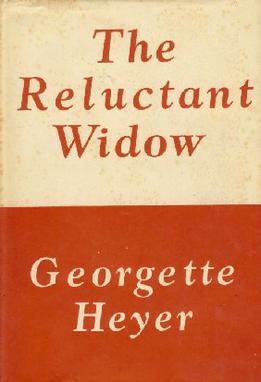
The Reluctant Widow is a 1946 Regency romance by Georgette Heyer, published by Heinemann in the UK, and by Putnam the following year in the US. A humorous parody of a Gothic Novel, it is set in early 1813. It was published with the description "By midnight she is a bride, by dawn a widow", and with gouache artwork by Philip Gough.

Georgian society in Jane Austen's novels is the ever-present background of her work, the world in which all her characters are set. Entirely situated during the reign of George III, the novels of Jane Austen describe their characters' everyday lives, joys, sorrows, and loves, providing insight into the period.
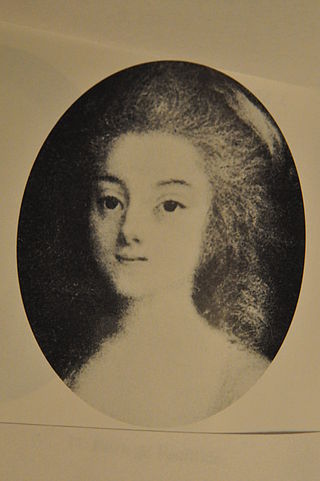
Eliza Capot, Comtesse de Feuillide was the cousin, and later sister-in-law, of novelist Jane Austen. She is believed to have been the inspiration for a number of Austen's works, such as Love and Freindship, Henry and Eliza, and Lady Susan. She may have also been the model from whom the character of Mary Crawford is derived.
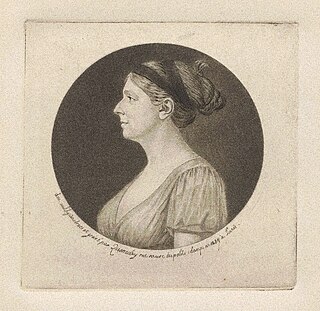
Margaret King (1773–1835), also known as Margaret King Moore, Lady Mount Cashell and Mrs Mason, was an Anglo-Irish hostess, and a writer of female-emancipatory fiction and health advice. Despite her wealthy aristocratic background, she had republican sympathies and advanced views on education and women's rights, shaped in part by having been a favoured pupil of Mary Wollstonecraft. Settling in Italy in later life, she reciprocated her governess's care by offering maternal aid and advice to Wollstonecraft's daughter Mary Shelley and her travelling companions, husband Percy Bysshe Shelley and stepsister Claire Clairmont. In Pisa, she continued the study of medicine which she had begun in Germany and published her widely read Advice to Young Mothers, as well as a novel, The Sisters of Nansfield: A Tale for Young Women.
Jane Arden Gardiner (1758–1840) was a British schoolmistress and grammarian, and one of the earliest friends of Mary Wollstonecraft.

Mona Wilson was a British public servant and author. After voluntary social work, seeking to improve the conditions of working women in deprived industrial areas, she joined the civil service in 1911, and became one of the first women in Britain to earn equal pay with her male colleagues. She left the civil service in 1919 and pursued a literary career.
Anne Sharp was an English governess and teacher who worked for Edward Austen Knight's family at Godmersham Park and became a close friend of Edward's sister, the writer Jane Austen.















